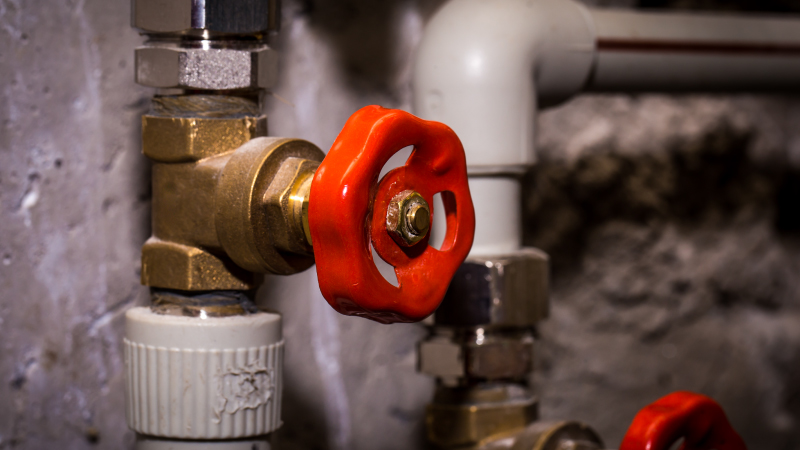Dealing with a burst pipe in your home can be a nightmare. Not only can it cause significant damage to your property, but it can also disrupt your daily routine and leave you feeling overwhelmed. However, with the right toolkit and knowledge, you can conquer the chaos that comes with a burst pipe situation.
Understanding the Urgency of a Burst Pipe Situation
Recognizing the immediate threat posed by a burst pipe is critical. The moment a pipe bursts, water begins to infiltrate your home, jeopardizing its structural integrity and creating an environment ripe for mold and mildew to thrive. This rapid dissemination of water can swiftly transform a manageable problem into extensive and costly damage, encompassing everything from your home’s framework to personal possessions. The risk of electrical hazards and potential health issues escalates the longer the situation is left unattended. Prompt action is imperative to minimize the adverse effects, highlighting the importance of swiftly moving to mitigate the situation and safeguard your living space from the potential long-term consequences of water damage.
Initial Steps to Take Immediately After a Burst Pipe
Upon identifying a burst pipe, your immediate course of action is critical to mitigating further damage. Firstly, locate and turn off the main water valve to halt the water’s flow. This step is paramount in preventing additional water from flooding your home. Following this, ensure the safety of your environment by switching off the electricity to the affected area, reducing the risk of electrical incidents. With these precautions in place, pinpoint the burst pipe’s location to understand the severity of the situation. Documenting the damage through photographs is essential for insurance claims; hence, capture clear images of the affected area and any damaged belongings. The next crucial step involves reaching out to a licensed plumber, who can assess the damage accurately and proceed with the necessary repairs.
The Essentials of Water Removal and Drying Out
Embarking on water removal and drying operations is a pivotal step in mitigating water damage post a burst pipe incident. Initiating this process involves deploying a wet/dry vacuum to effectively siphon off any accumulated water. This step is crucial for paving the way for a thorough drying out of the premises. To augment the drying process, strategically place fans throughout the area and run dehumidifiers to pull moisture from the air and surfaces. This proactive approach is instrumental in circumventing the onset of mold, which thrives in moist environments, and further damage to your property. Accelerating the drying phase is vital, as lingering moisture can undermine the structural integrity of your home and foster conditions conducive to mold proliferation.
Cleaning and Disinfecting After Water Damage
After successfully removing the water and ensuring the area is thoroughly dried, the next critical phase is to embark on a rigorous cleaning and disinfecting process. This involves using a mix of gentle yet effective cleaning solutions to tackle any dirt and residue left on walls, floors, and even furniture. For disinfecting purposes, create a solution comprising water and bleach, following the recommended safety proportions, to eradicate any harmful pathogens, bacteria, or mold spores that might have begun to establish themselves in the aftermath of the water damage. It’s essential during this phase to arm yourself with the proper protective gear, including gloves and masks, to shield yourself from direct contact with potentially hazardous materials or fumes emanating from the cleaning agents. Ventilating the area well during this process will also aid in eliminating any airborne contaminants and speed up the drying process.
Identifying and Repairing the Damage
After the area has been meticulously cleaned and disinfected, your focus should shift to evaluating the extent of the damage and initiating repairs. Begin by inspecting the structural integrity of your home, looking out for signs of warping, cracking, or sagging in floors, walls, and ceilings. These indicators can help pinpoint areas that require urgent attention. Engage the expertise of a professional contractor to accurately assess and repair any structural damage, ensuring that your home remains safe and stable.
Preventing Future Burst Pipes
Mitigating the risk of pipe bursts involves adopting a forward-thinking approach to home maintenance. Start by ensuring all pipes, especially those exposed to lower temperatures, are properly insulated. This can dramatically reduce the chances of freezing, which is a common precursor to bursting. Regular inspection of your plumbing system is another vital preventative strategy. Identifying and repairing leaks early can prevent them from escalating into more significant problems. Embracing these measures can significantly diminish the likelihood of facing another burst pipe scenario, safeguarding your home against extensive water damage and the ensuing restoration efforts that follow.

